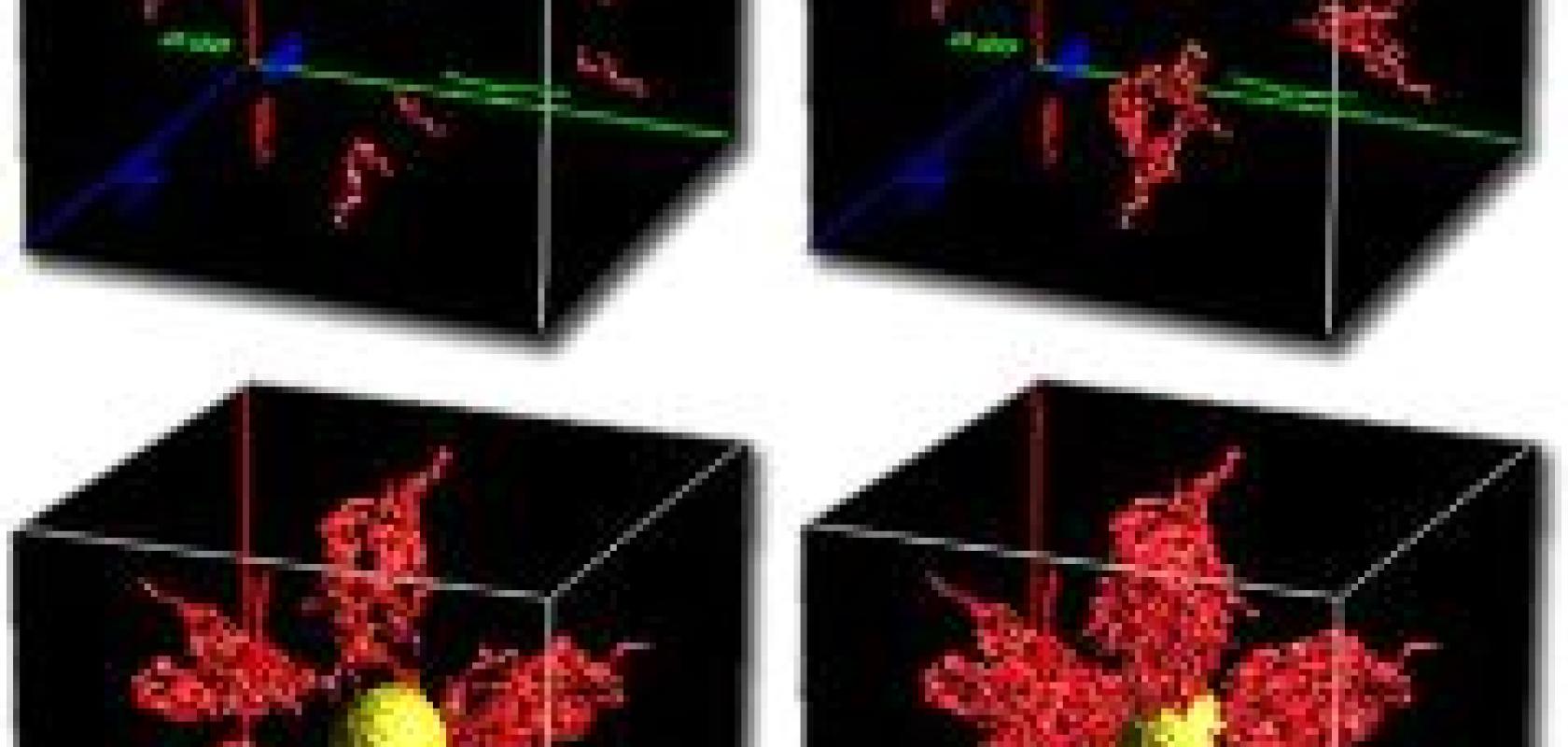The European Conference on Mathematical and Theoretical Biology (ECMTB), one of the largest of its kind in the world and held only every three years, has taken place in Edinburgh this year – the first time it has been held in the UK. The event, held from 29 June to 4 July 2008, attracted 550 participants, far exceeding the expectations of Dr Fordyce Davidson, senior lecturer in the University of Dundee's Division of Mathematics and one of the main organisers of ECMTB 08 along with Professor Mark Chaplain and Dr Sandy Anderson, both also at Dundee.
Interest centred on the use of mathematical modelling in oncology, whether that be mutations taking place in DNA molecules leading to the formation of cancer cells, or interactions of cancer cells making up large tumours within the body. Using computer simulations to study the efficacy of drugs targeting cancerous cells and the complex interactions that occur within the body was also covered at the conference.
'A key advantage of using powerful computing techniques to model complex systems is visualisation,' explained Davidson. 'It is almost impossible to visualise a growing tumour deep within the body, even with the use of the most advanced medical imaging technologies. However, it can be done virtually, and what’s more, virtual representations can give a real-time view of the growth and interaction of cancer cells.'
'With regards to knowledge transfer from research institutes to industry, computer simulations are an incredibly powerful tool,' said Davidson, 'and being able to visualise a biological process helps to explain the science behind it.'
Davidson's own research focuses on modelling fungal mycelial growth, with a project investigating the potential long-term effects of fungal growth on concrete encasing nuclear waste. 'The concrete would need to remain intact for more than 1,000 years to ensure sufficient decay of all nuclear material. Nobody can do an experiment lasting 1,000 years, but computational modelling can give an indication of the effects of mycelial growth on concrete over that timescale,' he said.
Further topics discussed at the conference included: mathematics for genomics and proteomics; developmental biology; complex biological networks; epidemiology; evolution; ecology; and biological environment and climate change, while plenary speakers included: Hans Othmer, School of Mathematics, University of Minnesota, US; Mats Gyllenberg, Dept of Mathematics and Statistics, University of Helsinki, Finland; Luigi Preziosi, Dept of Mathematics, Politecnico di Torino, Italy; and Dr Sonia Lain, Surgery and Molecular Oncology, University of Dundee, UK, among others.
'Mathematical biology is becoming a bedrock for biological sciences and is where a lot of the new, exciting work is happening,' Davidson said. 'Integration is key. Mathematical biology is now becoming a more balanced discipline with people who deal almost exclusively with maths, or scientific computing, or who are based in laboratories, coming together to pool their expertise. It's good to see people from different backgrounds rubbing shoulders at conferences such as the ECMTB.'


